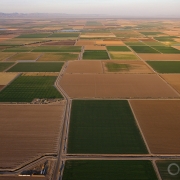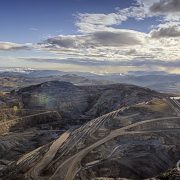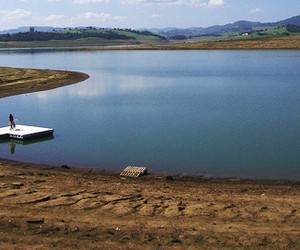Earth Pushes Back
Era of indifference greets droughts, floods, storms, tsunamis.
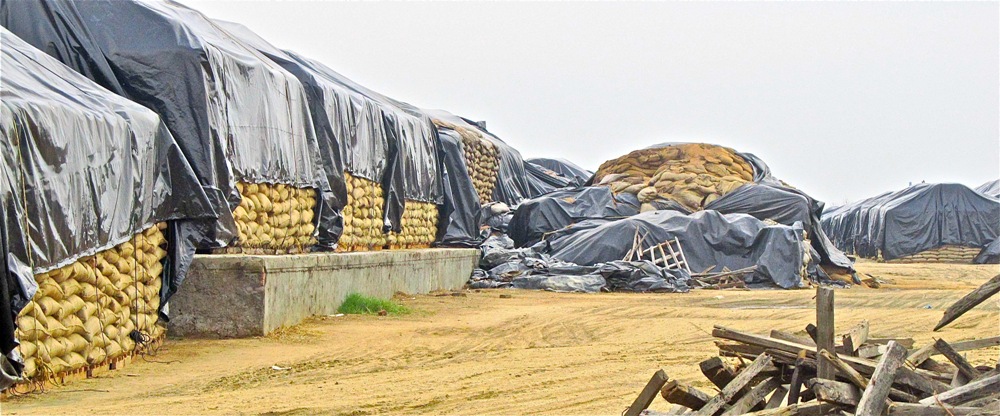
By Keith Schneider
Circle of Blue
There’s nothing demur about Mother Earth these days. She’s fuming and pushing back hard. Very hard.
The Ebola emergency that began in West Africa and has since spread to two more continents has produced 5,000 deaths and is accelerating. Deep droughts engulf Brazil’s largest city and America’s largest state. Hurricanes drowned two major American cities since 2005. The 2013 Philippines typhoon killed 6,250 people. The 2004 Indian Ocean tsunami killed 228,000 people. A tsunami in the Pacific Ocean in 2011 killed 16,000 people and shut down Japan’s seawater-cooled nuclear sector.
All of these events illustrate Earth’s new temper tantrum and reflect two reasons common to its cause. The first is the massive population growth that is pushing mankind deeper into dangerous places to secure increasingly scarce supplies of water, food, and energy. In West Africa more people ventured into equatorial forests for land to grow crops and wood to heat fires. They unleashed a plague.
The second is how transportation, energy, food, water supply, and other public systems have been so weakened by disinvestment, mismanagement, and corruption that nations are not capable of summoning an adequate response. In the case of the Ebola outbreak what was missing in West Africa was a competent health care system. The virus is loose now, spreading and dangerous.

The Earth doesn’t care. The Ebola outbreak is evidence of how nations are being pummeled by ecological emergencies that don’t seem natural – longer droughts, harsher floods, deadlier diseases, more severe insect infestations, earthquakes, tsunamis, and more powerful storms than ever before.
The deepening droughts in Sao Paulo, Brazil’s largest city, and in California are visible chapters in this new narrative. Disruptions in hydrological cycles have resulted in drier conditions across much of the planet. Sao Paulo, a city of nearly 12 million residents that is twice as big as it was in 1980, was slow to recognize the severity of the shortage of moisture and did next to nothing to encourage water conservation.
The grip of the California drought, the most severe ecological emergency in the United States since the Depression-era Dust Bowl, is already strong in rural farm areas, forcing tens of thousands of acres of crops out of production, and is steadily closing in on suburbs and cities. With each passing week without rain the big California dry is steadily crossing into new economic, environmental and governing frontier. It’s becoming a test of modern American democracy’s capacity to recognize change and to adjust, perhaps dramatically, a region’s water-rich economy and way of life to an unfolding era of scarce moisture.
A New Dimension of Risk
I’ve spent an adult lifetime reporting on calamity – manmade and natural. I was interested in the immense mudslide following heavy rains last spring in Washington state that killed 43 people; the more than 100 people killed by tornadoes over the last two years in the American South and Great Plains; the 40 hikers killed last month in a freak Himalayan blizzard stirred up by a cyclone that took a surprising turn north.
As a Great Lakes-based journalist I edited articles on the poisonous algae that erupt in Lake Erie and last summer shut down Toledo’s water supply. And as a reporter on the environment I was curious about the links between the ferocious wildfires that roared down on Colorado Springs in 2012 and 2013, destroying hundreds of homes, and the freak flash flood in September 2013 that killed four people in and around Boulder, and caused over $150 million in damage.
But I hadn’t tied any of them together until a year ago while reporting on the aftermath of a devastating and little known flood that may have killed 30,000 people in Uttarakhand, one of India’s five Himalayan states.
It was during that trip that I recognized a new dimension to ecological risk. It wasn’t just mankind tilting natural balances. It was the Earth responding with awesome force. The sheared hillsides, boulder-filled river bottoms, wrecked houses, and miles and miles of mud where highways once crossed clearly showed Earth’s unyielding power and its increasingly dangerous capacity to push back hard.
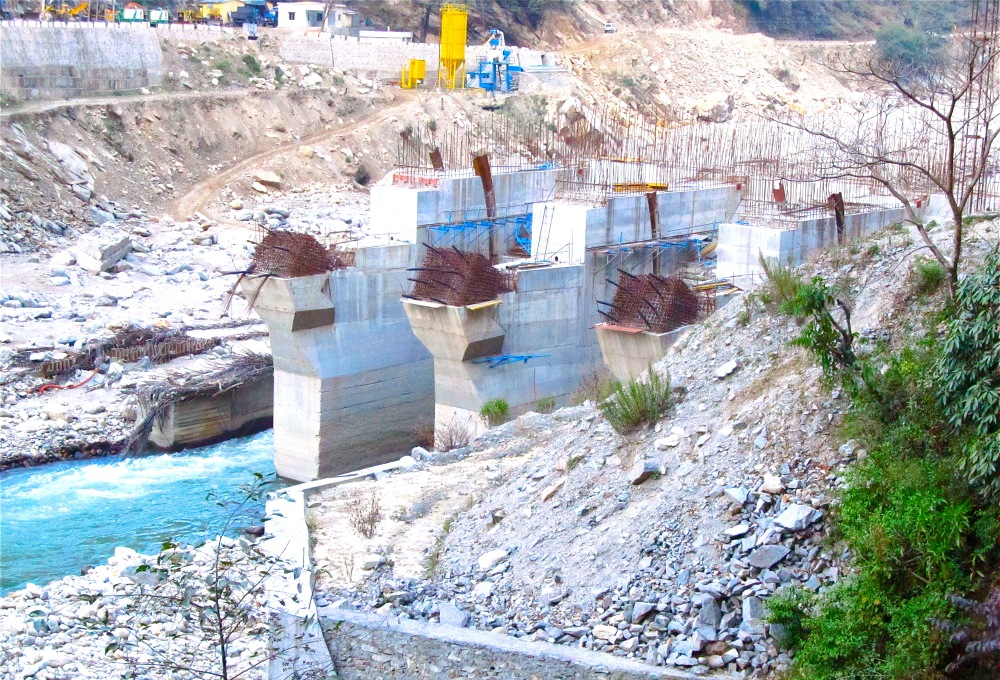
I’d never seen anything like the Uttarakhand disaster. The June 2013 floodwaters, produced by an unusual high summit cloudburst that dumped a foot of rain and ruptured a sizable alpine lake, raced down the steep valleys like packs of wild dogs clamoring for blood. The torrent bounded out of the river channels and lashed at everything in its path. Villages disappeared under the deluge of water, boulders and mud. The raging water clawed at the banks and bluffs, causing over 100 landslides that brought down more than 1,000 kilometers of highways and washed away hundreds of hotels, homes, shops, and government buildings.
For years academics in Uttarakhand warned of the danger of unbridled growth in the religious tourism industry that brought thousands of jobs and tens of thousands of Hindu pilgrims into treacherous valleys prone to earthquakes, floods, and landslides.
The warnings were ignored, as they typically are when economic gain and ecological stability are pitted against each other. The Himalayas didn’t care. The mountains unleashed a rage of water, rocks, and earth that residents said they’d never seen before. India officially counted roughly 6,000 dead. Villagers and a prominent science agency estimated the death toll as high as 30,000 people. Flood waters moving at the speed of a stampede wrecked Uttarakhand’s hydropower electrical sector, and left boulder-choked river channels prone to more flooding.
A Measure of Indifference
The Uttarakhand disaster, just like the Ebola health emergency, or the droughts in Sao Paulo and California, is more than a study of 21st century development confronting the tightening limits of environmental stability.
More than anything, it seems to me, these events measure society’s cultural and political indifference, our willingness to ignore hard choices. India, for instance, is draining its groundwater reserves, polluting its air and rivers, and generating economy-weakening brownouts with millions of electric water pumps that irrigate rice and wheat crops so big they rot in outdoor depots. But 700 million of India’s nearly 1.3 billion people are connected to grain production. So ending the policy of free electricity and free water to farmers is politically impossible even as it depletes the nation’s resources, limits distribution of scarce electricity, and is playing a part in India’s declining rate of economic development.
In the United States hurricanes in 2005 and 2012 that wrecked New Orleans and New York generated no focused national response other than fixing surprisingly flimsy communications, transportation, energy, water, and food supply systems.
Children are dying from miasmic air pollution in Beijing, Shanghai and other Chinese cities from combustion of coal. But China’s coal consumption, already 3.6 billion metric tons a year, is steadily heading to 4 billion metric tons and affecting weather patterns all over the planet.
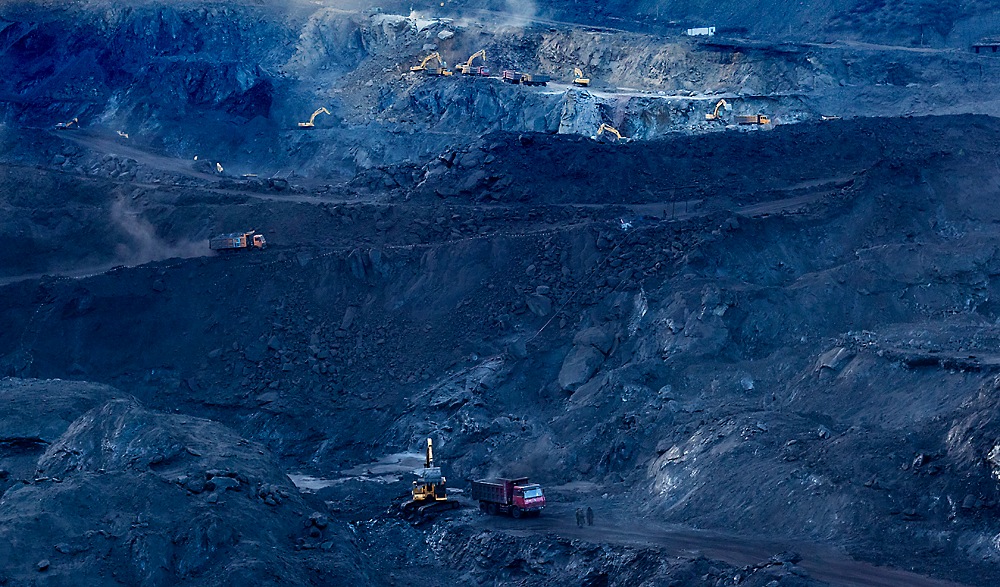
Cleaner and more efficient energy production, water-conserving farm practices, and effective investments in water storage, energy transport, and efficiency are widely available around the world. Farmers in Brazil can install equipment to grow sugarcane with less water, and India can reduce energy requirements for housing so that 100 new hydropower dams are not needed in the forbidding Himalayas. Putting these ideas into wider use would begin to reduce the competition for resources and lower ecological risks.
Those kind of big changes – adjustments needed to respond to the new cycles of killing storms and economy-wrecking droughts – require a mix of public and private investment. But in almost every region of the world the cost is said to be too high and the new tools have not been embraced as mainstream solutions by governments or citizens.
The Earth doesn’t care, though. When stirred, it is much more powerful than we are. At some point, hopefully soon, we’ll recognize the danger and act.
Circle of Blue’s senior editor and chief correspondent based in Traverse City, Michigan. He has reported on the contest for energy, food, and water in the era of climate change from six continents. Contact
Keith Schneider


